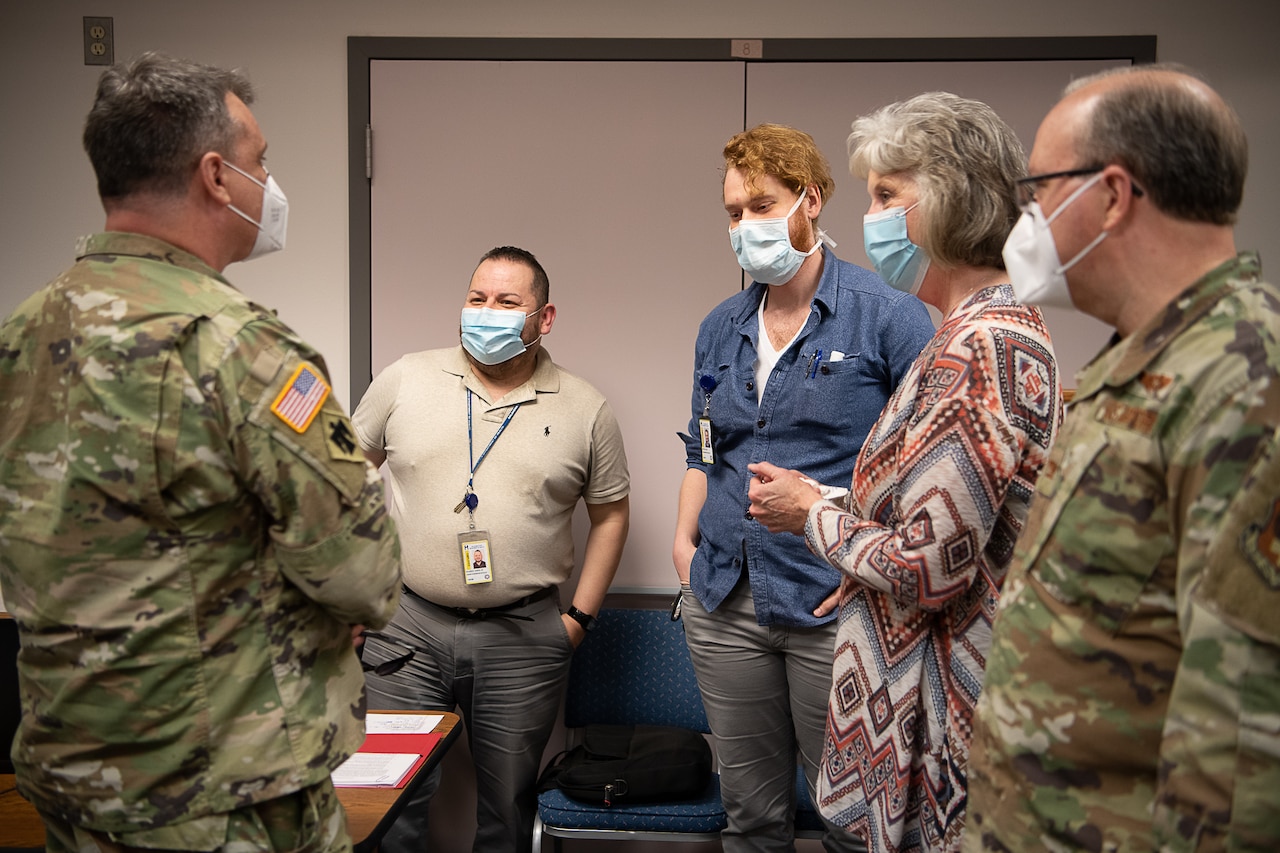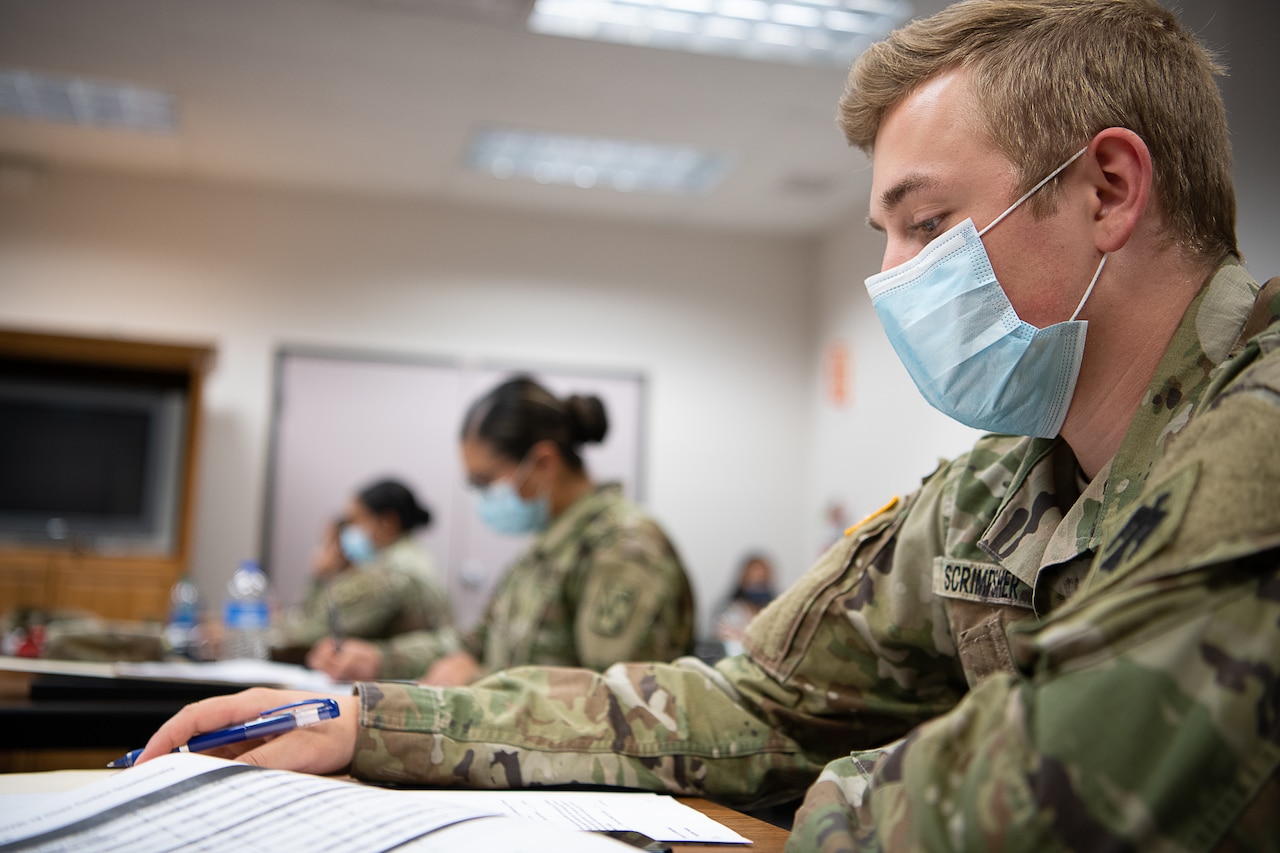In this latest push, Oklahoma guardsmen are helping with contact tracing, which is the process of tracing and monitoring the contacts of infected people.

"We're minimizing the spread and helping with the community," said Army Sgt. Anna Aranda, a member of the Oklahoma National Guard who serves as the noncommissioned officer in charge of the guardsmen working at the Texas County Health Department in Guymon, Oklahoma. "We're working closely with the Oklahoma State Department of Health and making a tremendous impact with them. You know, they needed our help, and so we're here."
The tracing, which begins with a positive COVID-19 test, follows the same procedures for any other disease or contagion tracing process. An employee from the Health Department makes the initial call, and after confirming their identity, informs the individual of the positive test result. They then work with the call recipient to voluntarily build a list of contacts who could have had exposure to the infected individual. That list gets passed to a trained person who then follows up with each of the contacts.
"There's the same procedure, same protocol, same stratagems to limit exposure," said Eddie Garza, a disease intervention specialist with the Oklahoma State Health Department. "But morbidity is so high here — and actually everywhere in Oklahoma, but especially in Texas County — that we needed reinforcements. The National Guard has been a tremendous help in contact tracing, because for one person who tests positive, we've had upwards of 10 to 15, sometimes 25 contacts."
Guardsmen working in a call center setup are trained to make the calls to each of the contacts while also protecting the contact's identity and medical information. Despite the "tracing" aspect of the interactions, the initial outreach begins regular contact with potentially infected people for the duration of their contagious period. These phone calls can include education of symptoms and prevention, resources such as food and supplies for those who need to quarantine and symptom monitoring for those who contract COVID-19 or have the potential to.

"We make phone calls and we inform them of their possible contact, and the response has been great," Aranda said. "Most everyone has been polite, encouraging and thanking us for following up with them. A lot of them are worried, you know, of course, and you've got to show empathy. You build a kind of trust with them."
For Aranda's region, which focuses heavily on Guymon, being bilingual provides a special skill set that goes further than their contact tracing training and is especially important. The population of Guymon speaks 37 different languages, with English and Spanish being the most prominent.
"We want to help the community to feel safe and for them to have an understanding of what we’re saying," Aranda said. "We have three service members who are bilingual, and they are a tremendous asset to our team. You want to speak the language that you're comfortable with, so that's what we do, and that gives them peace of mind when we call them."
Aranda, who is one of the three bilingual guardsmen there, says their ability to communicate with the community has really built rapport with those they have contacted.
"They're not afraid," she said. "They're not scared. So it makes me feel great that we're making such a big impact in this community. It's an amazing feeling. You can't beat that."
Aranda said the trust between the community and the guardsmen who are helping to carry out the contact tracing in their area is paramount to the success of their jobs as contact tracers.

"When we do contact tracing, there is fear that people have in the community about privacy," Aranda explained. "So we're not there to worry about what they're doing. We're just worried about their symptoms and making sure that they are aware that they came in contact with somebody with COVID-19. So our goal is to make them aware so they can help [prevent] the spread, and they’re usually grateful for that."
An exponential increase in the number of COVID-19 cases in Guymon demanded more contract tracing. Since their arrival in May, the guardsmen from the Oklahoma Air and Army National Guard have more than doubled the calling and testing capacity in the area.
"The guard has probably doubled my staff here in Guymon," said Terri Salisbury, the Oklahoma State Health Department regional director. "I really appreciate the National Guard coming out and being so willing [to help]. Most people don't come to Guymon, Oklahoma, and they've all been great. They've stayed and worked through the weekends and everything else. So I'm very, very thankful for them."
Teams like this one are spread throughout the state to help their communities limit their exposure to COVID-19 and fight against the pandemic together alongside other state agencies.
(Air Force Tech. Sgt. Kasey Phipps is assigned to the Oklahoma Air National Guard.)







No comments:
Post a Comment